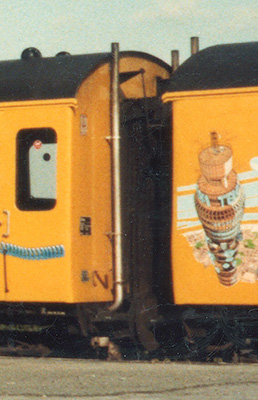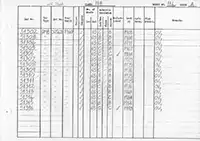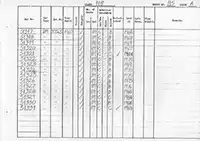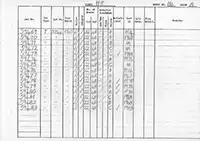Class 118 BRC&W 3-car DMUs
Description
Almost identical to the Pressed Steel Class 117s, the design was an update on the BR Derby built Class 116 units. This was a high density layout with a door to each seating bay, with a large guard / luggage compartment in one power car in each set. Updates from the Class 116s included adding the four-character route-indicator on the cab front and a toilet in the centre trailers.
Two marker lights were fitted above each buffer, although the first four sets did not have these from new. Buffers were initially of the square a.k.a. cut pattern, i.e. large round with flat top and bottoms.
Interiors

The interiors were to a high standard compared with other high density stock built by that time and, as used extensively by BRC&W on the earlier Class 104 units supplied to the London Midland Region, there was wood paneling throughout. However it seems like this was a wood effect formica rather than veneered panelling.
Much the interior decor was very similar to the Pressed Steel sets, the alloy luggage racks were of the same type, the seats were the same style, seat coverings in second class were maroon moquette with tan headrests. Traditional tungsten lighting was fitted, and large oval mirrors, two at each end of each power car mounted on the paneling between the cab bulkhead windows and the first passenger seat windows on each side.

In first class the seat headrolls were covered in vinyl while they were not on the Pressed Steel type, but the same moquette was used. Another difference, in both first and second class, is that the inside of the passenger doors were finished to match the wall panelling, they were lighter (possibly just painted) on the Pressed Steel sets.
In first class the luggage racks fitted above seats on the bulkheads had small reading lamps fitted with switches one for each lamp - these are evident in the works photographs. In is worth noting that when 59472 suffered accident damage in 1964, these switches (but not the lamps) on the end wall had been removed. The panel - the broken edges show that this is formica - has no holes where the switches used to be so has been replaced since new, and now seems to be lighter than the side panel,
Asbestos
The vehicles were built with blue asbestos in the walls, ends and ceiling. Some vehicles would have this removed. Below are pages from a vehicle log kept by the RTC at Derby dated circa 1984 which included the asbestos status for each vehicle.
The codes for the asbestos columns are: / not built with blue asbestos; B - blue asbestos; and C - removed. In the remarks column OV means open van (no cage).
Alterations

Gangways
Built without corridor connections these were added to all vehicles beginning in the late 1960s. The first to have these added, according to the 1969 Ian Allan ABC, were 51315 + 59482 + 51330 which at the time were at Reading running as set L473. The same publication also showed that the three centre cars running in Pressed Steel sets (59478/9/80) had also been gangwayed the same year.
All vehicles were gangwayed by the 1973 edition of the ABC.
The image shows thes gangways fitted to British Telecom liveried 51302 + 51317 when running as a power twin in 1985. They are of the 'suspended' type fitted to many Western Region DMUs.
Marker lamps
An interesting feature of the class was that after the abandonment of the four character headcode display system, at least one set (P480) had it's front marker lamps removed in favour of the fitting of two illuminated white discs mounted in the headcode box as on most locomotives of the time. This situation lasted only until the repainting into blue & grey when headcode boxes were blanked out completely and all vehicles had marker lights added.

The images shows 51327 as part of 2-car set P480 with it's marker lights removed and two white dots on the now-disused 4-characer box (Ian Francis).
Over the years other types of buffer were fitted - oval and large round. Laterly a number of sets had the roof vents plated over.
Summary
Description
Diagrams
Refurbishment
Works Photographs
Numbering & Driving Inst.
Liveries
Operations
Non-Passenger Use
Images
Details about the preserved Class 118 vehicle can be found here.





